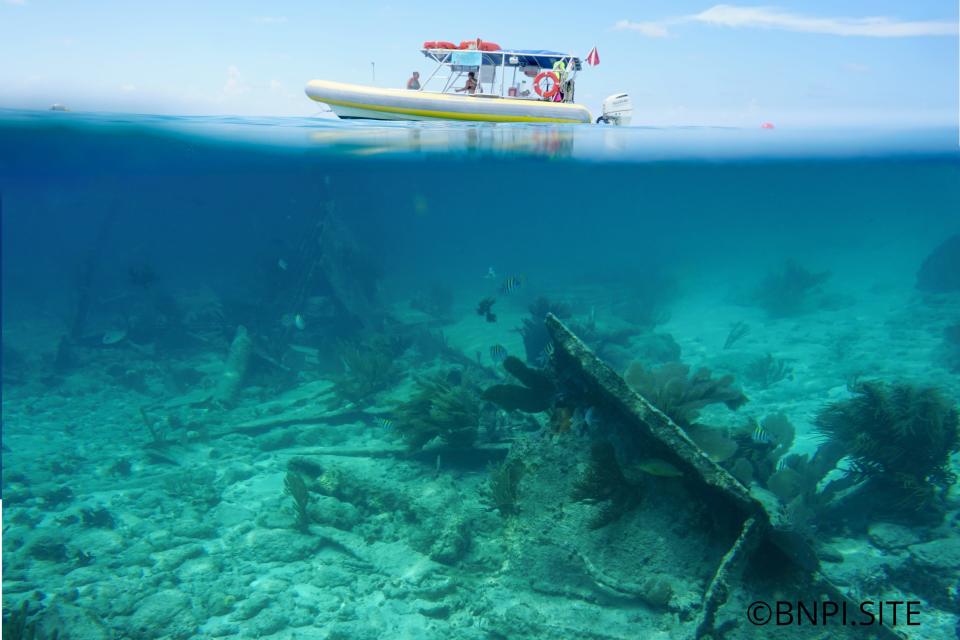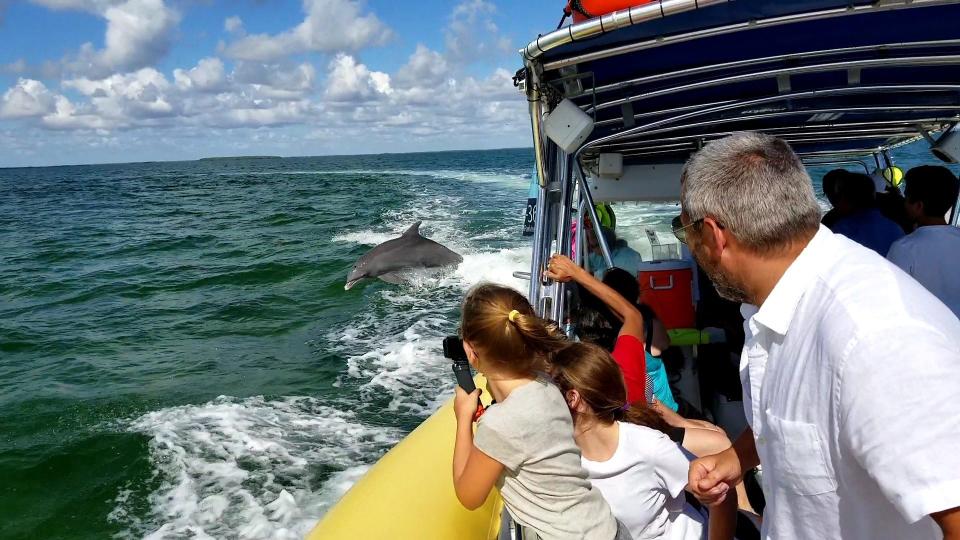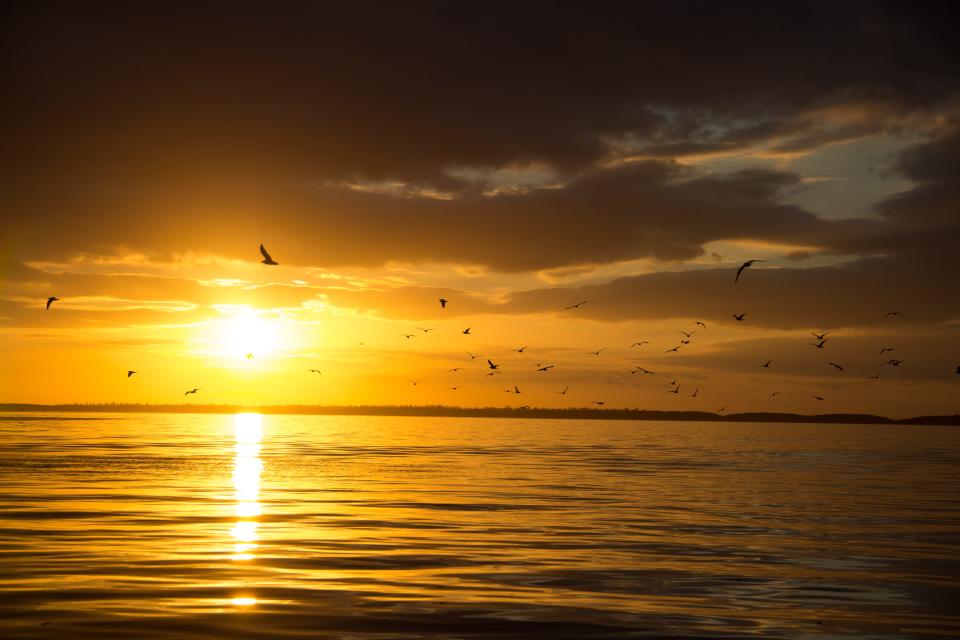Biscayne National Park showcases natural wonders not far from Miami | Travel
Many are familiar with the mighty Everglades National Park, but nearby Biscayne National Park goes under the radar for some locals and out-of-towners alike, a shame indeed, because the park, less than 20 miles away from the Everglades, tells a very different story.
Both parks protect an unparalleled landscape and important habitat for a variety of animal species, but while the treasures of the Everglades are primarily above the water line, the riches of Biscayne National Park lie hidden in the aquamarine sea.
The country’s largest marine national park, Biscayne — with its pristine waters and necklace of tiny emerald islands — is unexpectedly located within sight of downtown Miami’s skyline. Humans discovered the bounty of these waters more than 10,000 years ago, and a panoply of unique individuals have left their imprint there since.

More travel: Celebrity to join Port Canaveral lineup in December 2024, making it seventh cruise brand
More travel: Richmond delivers on adventure, history and Southern hospitality | Travel
The park’s watery boundaries almost touch Key Biscayne at its north end and Key Largo to the south. On land somewhere around the middle, the Dante Fascell Visitor Center in Homestead offers exhibits, a theater/gallery and trail, but Biscayne is best seen on and in the water. That’s no problem, since Biscayne National Park Institute, a partnership between the park and the nonprofit Florida National Parks Association, provides literally immersive eco-adventures that connect visitors with the rich natural world and history of the park.
While most tours depart from the Visitor Center in Homestead, some are accessible at Coconut Grove’s Dinner Key Marina and the Deering Estate, making it extra convenient for guests staying in Miami.
First-time visitors cannot go wrong with booking the 3.5-hour Heritage Cruises on a journey across Biscayne Bay aboard boats such as the comfy Sawfish, where Capt. James Hood and naturalist Elizabeth Bonnell regale guests with stories of the folks who shaped the park and its surroundings, and point out the abundant wildlife inhabiting the nooks and crannies of protected mangroves and seagrass meadows.

Touring the northernmost islands of the Florida Keys, the cruise will motor to Elliott, Adams or Boca Chita Key for a one-hour stop, so visitors can poke along the pocket beach or hike a short nature trail.
During weekends, Boca Chita Key overflows with pleasure boats big and small, yet is virtually deserted during the week, giving visitors ample time to climb the decorative and historic Boca Chita Lighthouse, built by industrialist Mark Honeywell as part of his holiday retreat and site for epic parties.
Honeywell’s buddies loved whisking across Biscayne Bay on luxury vessels that transported them from posh Miami Beach pads to Boca Chita, where the magnate would greet them by firing an antique cannon. The parties even included Rosie the elephant, ferried to Boca Chita by Carl Fisher, the man who created Miami Beach, just to entertain guests.
While the rich and famous used Biscayne Bay to cavort, it was the son of an enslaved person who helped create Biscayne National Park.
In the 1960s, developers eyed the bay’s northernmost keys with lust. This was to be the next waterfront luxury development, complete with high-rises, airport, amusements and roads. However, they had not counted on Lancelot Jones, whose father, Israel “Parson” Jones, had scraped $300 to purchase the 64-acre Porgy Key six miles offshore. The hardworking Parson later bought two other islands on which to grow key limes, enough land to make the Jones family the largest farmers of the fruit in the state.

When the market for key limes bottomed from Prohibition and the introduction of imported Persian limes, Lancelot became a fishing guide for rich white guys with names like Firestone, Florsheim and Maytag. He also guided presidents and celebrities, from Lyndon Johnson and Richard Nixon to Will Rogers and Irving Berlin, on their angling trips to Biscayne Bay.
A multi-million-dollar buyout for 277 acres perched the middle of a bay would have seemed highly desirable to many, but not to Lancelot Jones, who refused to sell, spurring the move to preserve Biscayne Bay through the creation of a national monument. Lancelot could have realized tons of money, yet chose to sell his land to the National Park Service at a fraction of the developer’s offer so it could be preserved and enjoyed by many. In 1968, President Lyndon Johnson signed the bill creating Biscayne National Monument, which became Biscayne National Park in 1980.
Another Biscayne National Park Institute tour that introduces additional members of the park’s cast of characters is the Stiltsville Guide Tour from Coconut Grove. In its heyday, Stiltsville encompassed 27 stilt-built structures, all seemingly floating on the shallow seagrass beds. Some of the buildings were family homes, but others, like the 1940s-era Quarterdeck Club, were party destinations with adult-type entertainment made the more alluring because it was accessible only by boat.
Seven of the buildings remain, the rest are gone, thanks to storms, wind, fires and the ultimately transitory nature of building over the water. Even though a shadow of its former self, Stiltsville remains fascinating. For a more up-close experience, the Institute offers kayaking through the seagrass beds around the remaining houses.

With the aid of SCUBA or snorkel, visitors can explore the park’s Maritime Heritage Trail of six of the park’s many shipwrecks. Spanning nearly a century and of varying sizes and types, several of the sunken vessels can be enjoyed with snorkeling equipment, while others, like the 1891 ship, the Erl King, is better suited to SCUBA.
Biscayne National Park Institute hosts snorkel and SCUBA adventures to the shipwrecks and reefs, plus SUP and kayaking adventures around the park, and what is perhaps the ultimate laidback Biscayne experience, a six-hour Sail, Paddle, Snorkel and Island Visit that explores the park under full sail before delivering guests to Boca Chita or Adams Key, where they can kayak from the boat dock to explore the mangrove forests and snorkel.
Biscayne National Park is always ready to share its natural and historic glories, whether for a couple of hours or a full day or more.
For more information, visit biscaynenationalparkinstitute.org.
Sonnenberg is a Melbourne-based freelance travel and lifestyles writer.
This article originally appeared on Florida Today: Biscayne National Park hides natural beauty beneath its waters

